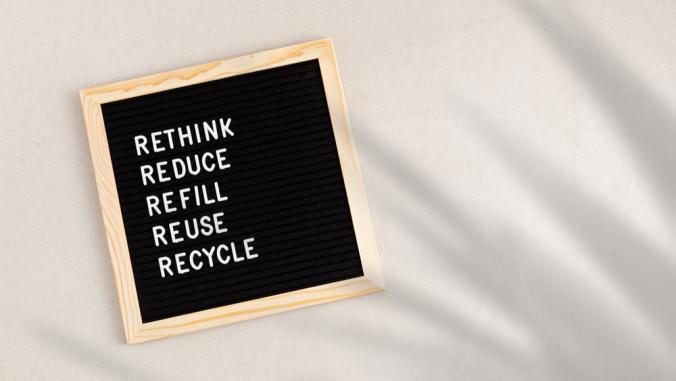Can we fight food waste with plastic packaging?
The impacts of losing food across the value chain are massive. Could improving packaging — even if it's plastic — be the answer?

Prickly pears on a conveyer belt, about to be packaged.
This article is drawn from the Circular Weekly newsletter from GreenBiz, running Fridays.
The best solution isn’t always the most intuitive, such as preventing food spoilage by increasing packaging. Particularly given the politically charged dialogue (and dogma) around plastics and plastic waste, navigating these trade-offs can be both contentious and counterintuitive. But when we take a step back to consider the cumulative impacts and systemic implications of each, we can swap pessimism for progress and chip away at a massive systemic issue.
If you haven’t heard, we have a food waste problem. The United States alone throws away 63 million tons (PDF) of food annually. That’s a loss of $218 billion — 1.3 percent of GDP — when accounting for growing, processing, transporting and disposing of food that is never actually eaten. When we consider the embedded energy and invested resources in this statistic — the water, land, fertilizer, labor, fuel and energy — the impacts add up quickly.
So what gives? In developing countries, wastage is generally unintentional. Produce rots on farms or spoils during distribution, referred to as "food loss." Accordingly, these problems are arguably more straightforward to solve through technology deployment and efficiencies in operations and supply chains.
On the other hand, more developed countries produce waste further down the supply chain, with nearly 85 percent occurring in consumer-facing businesses and homes. Retailers and consumers reject cosmetically challenged produce, overserve cooked food or simply overpurchase — often intentionally — and let the food spoil.When we consider the embedded energy and invested resources in this [food waste] statistic — the water, land, fertilizer, labor, fuel and energy — the impacts add up quickly.
"In some ways, it’s not surprising that we waste so much food; it has never cost less or been more readily available," wrote Pete Pearson, director of food waste at WWF. "Abundance and affordability are good problems to have, but they lull us into a false sense of security. Inexpensive food externalizes costs that we might not see on our grocery receipts."
The externalities are hard to ignore. If food waste were a country, it would be the third-largest (PDF) greenhouse gas (GHG) emitter in the world, accounting for 8 percent of global emissions. Much of this impact comes from food ending up in landfills, where the zero–oxygen environment turns organic matter into methane, a GHG 85 times more potent than carbon dioxide.
But according to ReFED, a multi-stakeholder coalition of more than 50 business, government and nonprofit leaders committed to reducing food waste in the U.S., the problem is solvable. This analysis comes from A Roadmap to Reduce U.S. Food Waste (PDF), the first national, data-driven economic study by a multi-stakeholder group to outline solutions to food waste at scale, released by ReFED in March 2016.
By deploying 27 solutions, the benefits of each outweighing the cost, along with a hefty $18 billion in investment (PDF) over the next 10 years, the U.S. could unlock up to $100 billion in value and decrease food waste by 20 percent. Two of these solutions call for an increase in packaging.
According to The Economist, "for every ton of packaging, the equivalent of between one and two tons of carbon dioxide is released. For every ton of food wasted, the equivalent of over three tons of carbon dioxide is emitted. So while supermarkets used to focus on curbing the amount of packaging they use, many now consider extending shelf life the most important environmental consideration." By both prolonging a product’s shelf life and by allowing customers to purchase only what they will consume, ReFED emphasizes the potential for packaging to combat food spoilage.By deploying 27 solutions ... the U.S. could unlock up to $100 billion in value and decrease food waste by 20 percent. Two of these solutions call for an increase in packaging.
Of course, the potential to reduce waste varies widely by food and packaging type. When taking in to account local recycling infrastructure, reusable containers, biomaterials and other developments in packaging as well, calculating the food waste/plastic waste trade-off is not a straightforward task.
But scaling circularity means navigating the dynamic tension between designing a perfect system for the future, and implementing a better one today. I can’t point to any perfect example — one without externality or negative impact — of a fully circular value chain.
"Progress does not mean that everything becomes better for everyone everywhere all the time. That would be a miracle, and progress is not a miracle but problem-solving," said Steven Pinker in his latest TED talk, quoted this week by my colleague Elaine Hsieh in VERGE Weekly. "Problems are inevitable, and solutions create new problems which have to be solved in turn."
While simultaneously working to proliferate and scale alternatives to single-use plastics, increase recycling infrastructure and eliminate waste into the environment (read more about these solutions here), we also must accept that progress towards closed-loop systems cannot be the enemy of perfectly circular ones.





